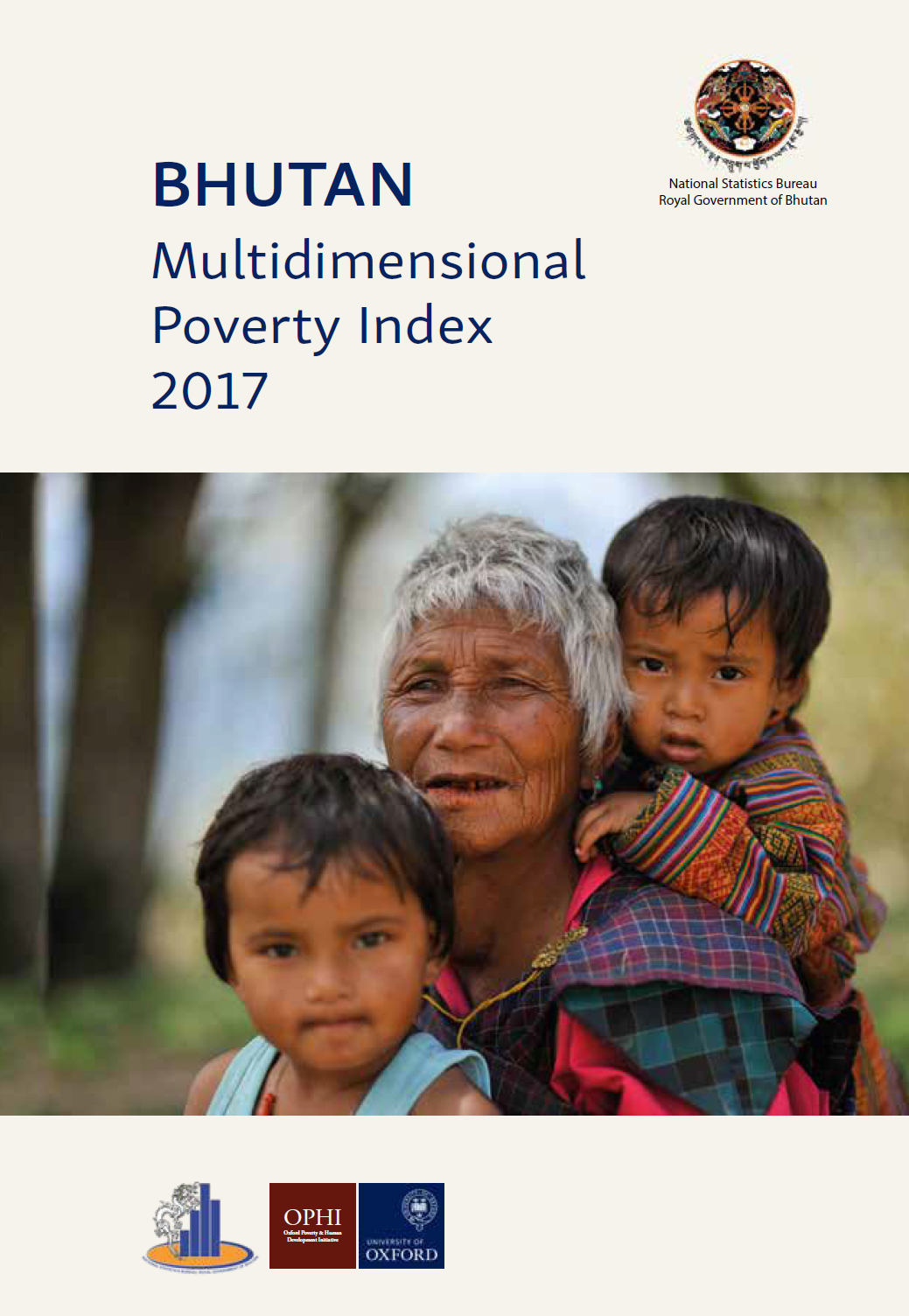Bhutan Multidimensional Poverty Index 2017
This Report, co-authored by the National Statistics Bureau (NSB) of the Royal Government of Bhutan and Oxford Poverty and Human Development Initiative (OPHI), is the first update of Bhutan’s national Multidimensional Poverty Index since 2012. The Bhutan MPI monitors 13 indicators – food security, low education and inadequate sanitation, distributed across three dimensions: health, education and standard of living.
The Report states that among the 13 MPI indicators, the largest contributors to national poverty in are deprivations in years of education (32%), followed by child mortality (23%) and school attendance (13%). A total of 8.4 percent of people who live in households where the head had no education are MPI poor compared with only 0.2% of people with heads having studied beyond grade IX. However, multidimensional poverty has almost been halved in the last five years. The report states that MPI fell from 0.051 to 0.023 between 2012 and 2017. The MPI is the product of percentage of poor people and the average intensity of poverty.
Today, Bhutan’s multidimensional poverty rate is estimated at 5.8 percent of the population against 12.7 percent five years ago. This indicates that poor people in Bhutan experience 2.3 percent of the deprivations that would be experienced if all people are deprived in all indicators.
Citation: NSB and OPHI (2017). Bhutan: Multidimensional Poverty Index 2017. National Statistics Bureau (NSB) of Royal Government of Bhutan, and Oxford Poverty and Human Development Initiative (OPHI), University of Oxford.



